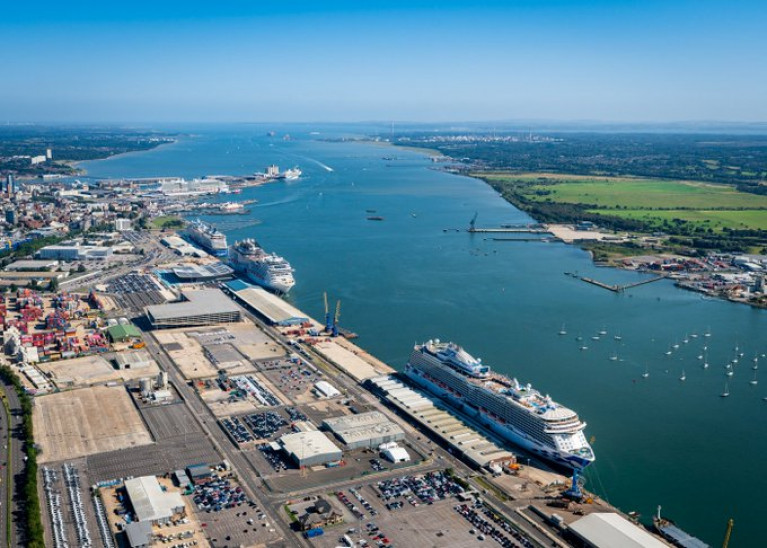Displaying items by tag: UK main cruiseport
Full Cruise Operations Return at Port of Southampton Sees Consecutive Five-Ship Weekends
Following an easing back to full cruise operations at the UK's main cruise port of Southampton which had its busiest month of the year to date with two consecutive five-cruise ship weekends during August.
On Saturday 7 August and Saturday 14 August, each one of the port’s world-class cruise terminals was occupied as the cruise industry makes its phased return. This is welcome news for holidaymakers as well as for the thousands of local residents who rely on the cruise industry for their livelihood.
During the first five ships day, Ocean Cruise Terminal hosted P&O Cruises’ Iona. The new cruiseship later departed the ship's home port (see May's naming ceremony) for a maiden passenger cruise.
Marella Explorer departed from Queen Elizabeth II Terminal in the Eastern Docks, MSC Cruises’ MSC Virtuosa (Belfast's first bigship caller), fitted with Shore Power connectivity, was at the port’s newest terminal, Horizon Cruise Terminal.
Anthem of the Seas, Royal Caribbean’s second largest ship in its Quantum-class, was at City Cruise Terminal, and Regasothl Princess, Princess Cruises’ Royal-class ship, departed from the Western Docks Mayflower Terminal (adjacent to the Southampton International Boat Show, see story).
On the second weekend, Royal Caribbean’s Celebrity Silhouette was at City Cruise Terminal in place of Anthem of the Seas, with all other ships above returning to their respective terminals for further passenger operations. (These ships Afloat adds also visited Belfast Harbour this season).
Rebekah Keeler, Head of Cruise at ABP, said: “We’re excited to be getting closer to seeing what a ‘normal’ cruise weekend for the port in peak season would be. It’s taken a huge collaborative effort by the industry to bring cruise back safely and it fills us all with pride to see passengers once again beginning their holidays here at the Port of Southampton.”
Before the industry pause, the Port of Southampton would typically welcome two million passengers every year, with each cruise call bringing in over £2.7million into the local economy. The coming months are expected to be busy, with all terminals occupied at weekends and lots of activity on weekdays too.
With the new next-generation-ready Horizon Cruise Terminal now welcoming passengers, and its shore power due for commissioning this year, the strengthening of cruise infrastructure places the Port of Southampton firmly at the forefront of the future of cruise.
























































